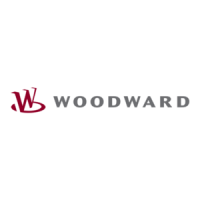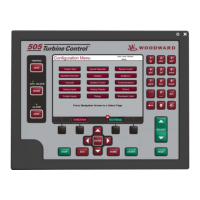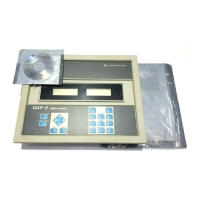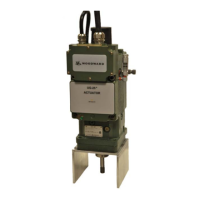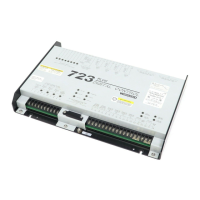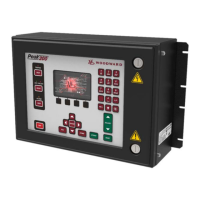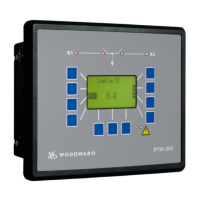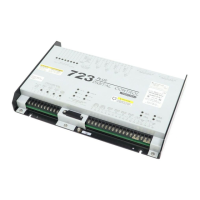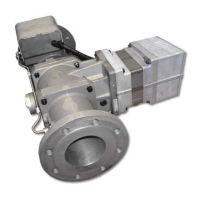Manual 37365A GCP-30 Series Packages - Genset Control
Page 40/179 © Woodward
Parameter 42
F/P contr.type
----------------
BPQ, XPQ
Frequency controller: type THREESTEP / ANALOG / PWM
THREESTEP The signal to the speed control to increase/decrease the
speed/frequency/real power is output via the relay manager to any
two configurable relays. The following relay functions must be as-
signed to the individual relays.
• function 114 = increase RPM (n+) / frequency (f+) / power (P+)
• function 115 = decrease RPM (n-) / frequency (f-) / power (P-)
Refer to the Controller Outputs section of manual 37364 for wiring
an external Resistive/Capacitive protection circuit.
ANALOG ..... Speed control is performed via the analog outputs (terminals 8/9/10).
The control of speed/frequency/real power is performed via either a
voltage or current signal. The amplitude and signal type (mA or V) to
be utilized is configured in "F/P contr.output" (Parameter 46). If a
v
oltage signal is used, a jumper must be installed between terminals
8/9 (refer to the wiring diagram in manual 37364).
PWM ............ Speed control is performed via the analog outputs (terminals 8/9/10).
The control of speed/frequency/real power is performed via a PWM
signal. The amplitude of the PWM signal to be utilized is configured
in "Level PWM" (Parameter 47). If a PWM signal is used, a jumper
m
ust be installed between terminals 8/9 (refer to the wiring diagram
in manual 37364).
Three-Position Controller (XPD; BPQ, XPQ: Setting 'THREESTEP')
Parameter 43
Freq.controller
deadband 0.00Hz
Frequency controller: dead band 0.02 to 1.00 Hz
Isolated operation The generator frequency is controlled in such a manner that the
measured frequency does not deviate from the configured set point
by more than the value configured in this parameter without the con-
troller issuing a frequency raise/lower signal to the frequency control.
This prevents unneeded wear on the frequency bias output control or
the raise/lower relay contacts.
Synchronization The generator frequency is controlled in such a manner that the
measured frequency does not deviate from the monitored reference
(mains or busbar) frequency by more than the value configured in
this parameter without the controller issuing a frequency raise/lower
signal to the frequency control. This prevents unneeded wear on the
frequency bias output control or the raise/lower relay contacts. The
value configured for this parameter must be less than the value con-
figured for the df max (maximum frequency differential) for syn-
chronization.
Parameter 44
Freq.controller
time pulse>000ms
Frequency controller: three-step minimum pulse 10 to 250 ms
When "F/P contr.type" (Parameter 42) has been configured as THREESTEP, a
minimum pulse on time must be configured. The shortest possible pulse time
should be configured to limit overshoot of the desired speed reference point.
Parameter 45
Freq.controller
gain Kp 00.0
Frequency controller: gain 0.1 to 99.9
The gain factor K
p
influences the the operating time of the relays. By increasing the
number configured in this parameter, the operating time of the relay will be in-
creased in response to a deviation from the power factor reference. By increasing
t
he gain, the response is increased to permit larger corrections to the variable to be
controlled. The farther out of tolerance the process is the larger the response action
is to return the process to the tolerance band. If the gain is configured too high, the
result is excessive overshoot/undershoot of the desired value.
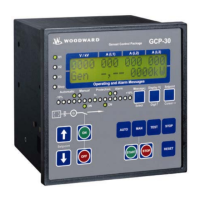
